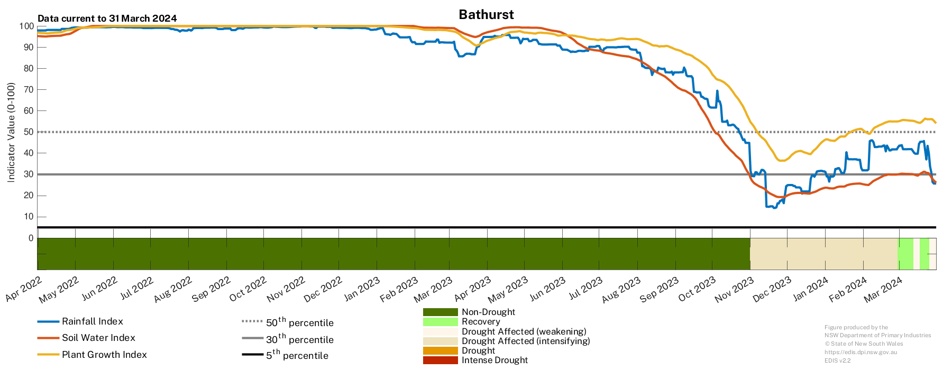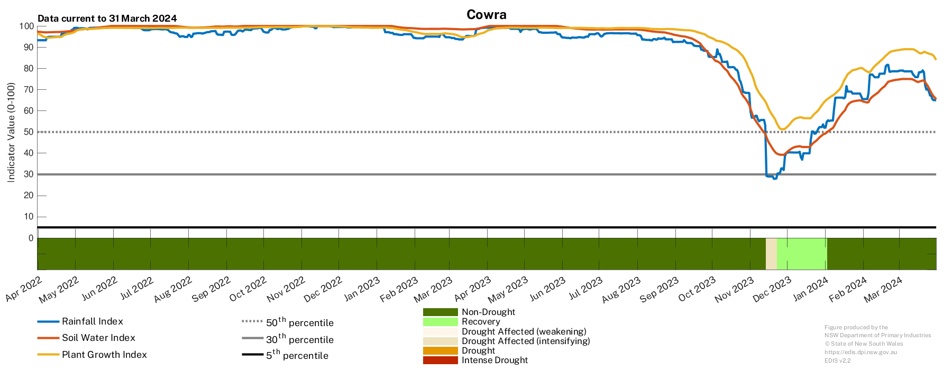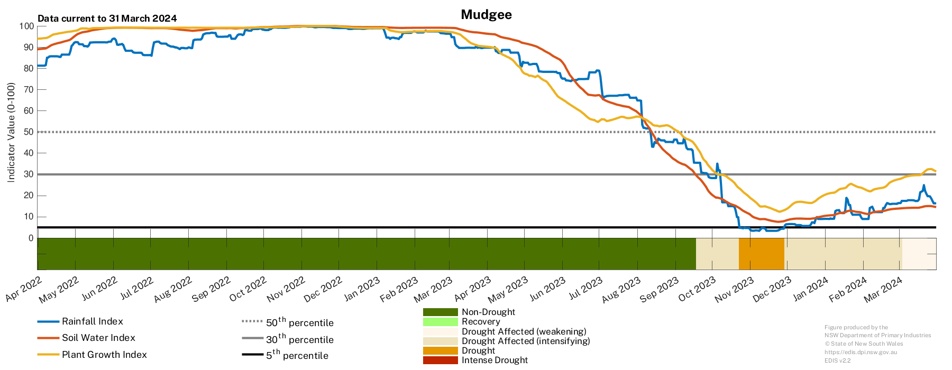March 2024
 Central Tablelands Local Land Services
Central Tablelands Local Land Services
Drought conditions re-intensify in parts of the region. Follow up rainfall needed to improve soil moisture levels.
- The Combined Drought Indicator (CDI) is variable across the region. The area in the Non-Drought category remains stable in the south of the region in response to well-timed follow up rainfall events.
- Other areas have returned to the Drought Affected or Drought category due to warm temperatures and variable rainfall over the past few months.
- March rainfall has been average, to below average for the entire region. This rainfall has improved the outlook for many producers preparing for winter crop planting.
- Soil water levels remain low particularly in the north to northeast of the region, due to above average temperatures for much of March.
- Further rainfall is needed to maintain the improved conditions and ensure a sustained recovery continues across drought affected areas.
- Producers are continuing to monitor farm water supplies as part of their drought management strategy.
- The NSW DPI continues to closely monitor conditions in this region.
Click on the scroll bar below the map to compare with previous months.
Normalised Difference Vegetation Index (NDVI)
Timely rainfall has seen improvements in plant greenness.
- Average to above average rainfall has seen improvements in plant greenness values over the last several months. Many areas have above normal levels of plant greenness.
- The very high levels of plant greenness in the southwest are the result of rainfall received from ex-tropical cyclone Kirrily.
- Some of the extremely negative NDVI areas (brown patches) are water bodies.
Individual drought indicators
Drought indicators respond to rain events but remain low in the central and north of the region.
- The Drought History charts show the individual response of the drought indicators for Bathurst, Cowra, and Mudgee.
- The rainfall index has declined over recent weeks in regions like Bathurst, Mudgee and Cowra. The PGI remains higher than the SWI and RI in many parts of the region, indicating solid growth conditions for pastures for these regions.
- The indices in regions like Bathurst are on the margin of the indicator threshold (30) used to determine for the ‘Drought Affected’ category. Bathurst returned to the Drought Affected category at the end of March after a period of recovery.
- Cowra remains in the Non-Drought category and rainfall over the coming weeks will ensure the region remains well placed heading into the mid-autumn period.
- Mudgee continues to have low values in all three drought indicators and substantial rainfall is needed to trigger an improvement in conditions.
- The significant rainfall event occurring in early April will likely change these trends in the coming weeks.
- To access a Drought History chart for your Parish, visit the Seasonal Conditions Information Portal


